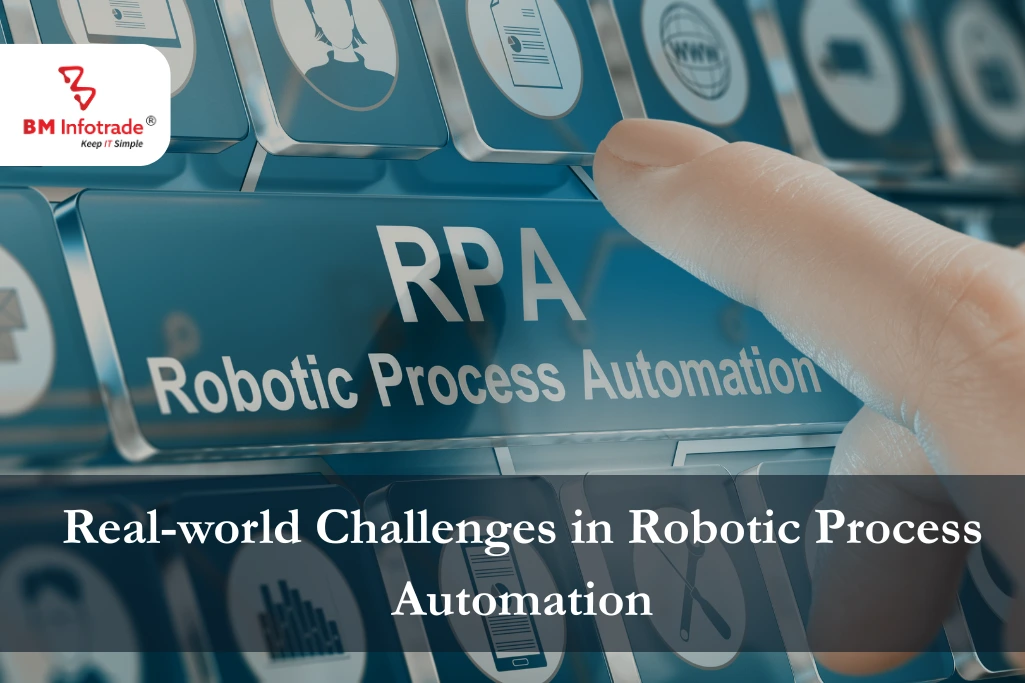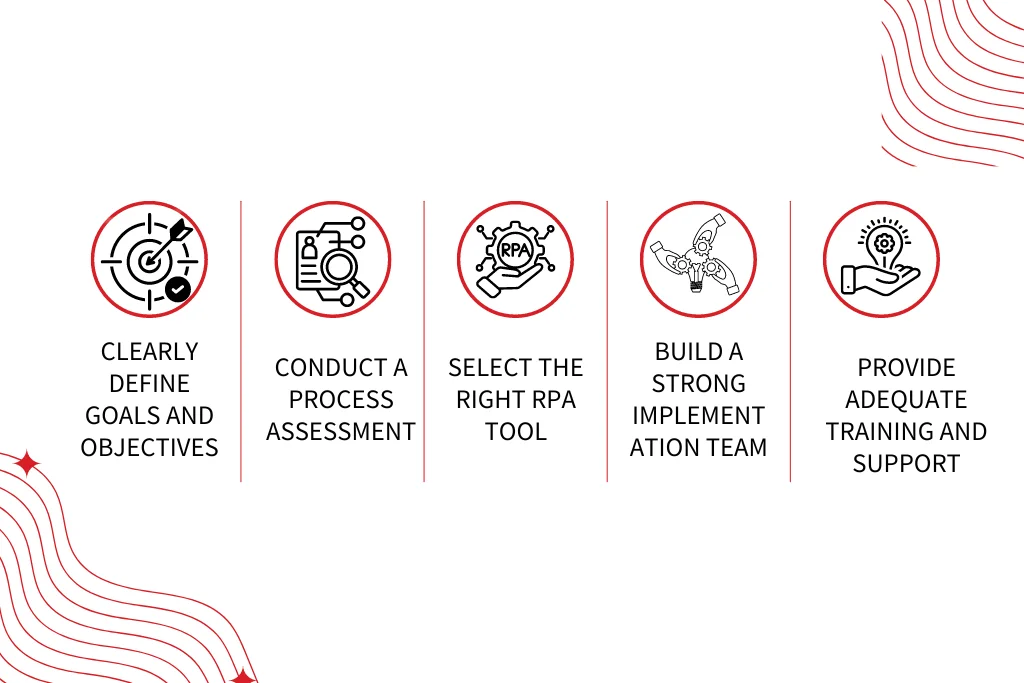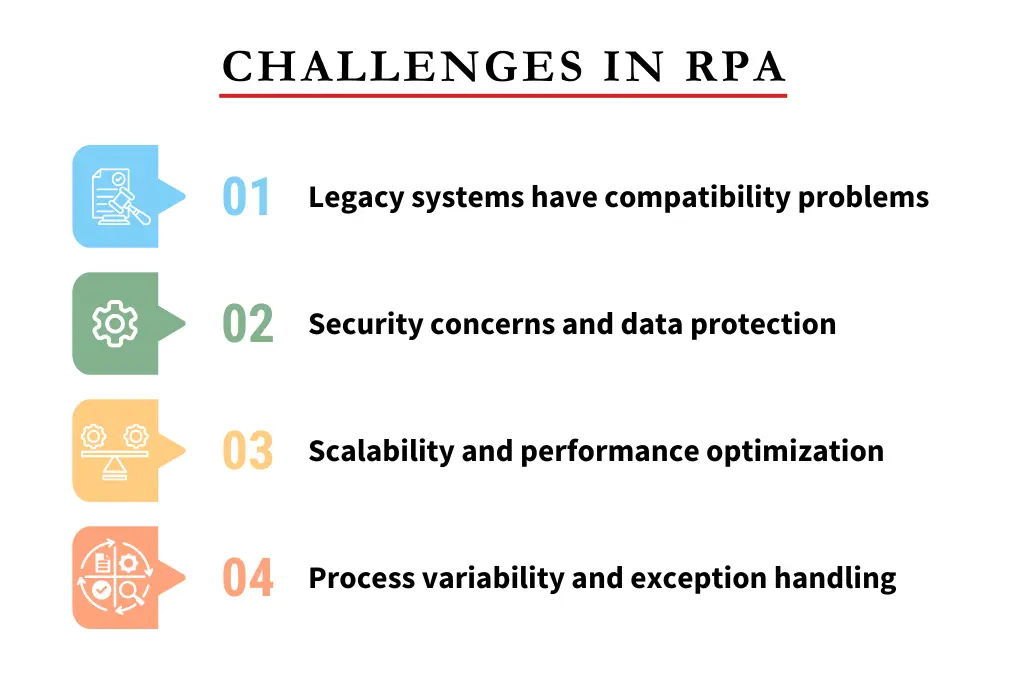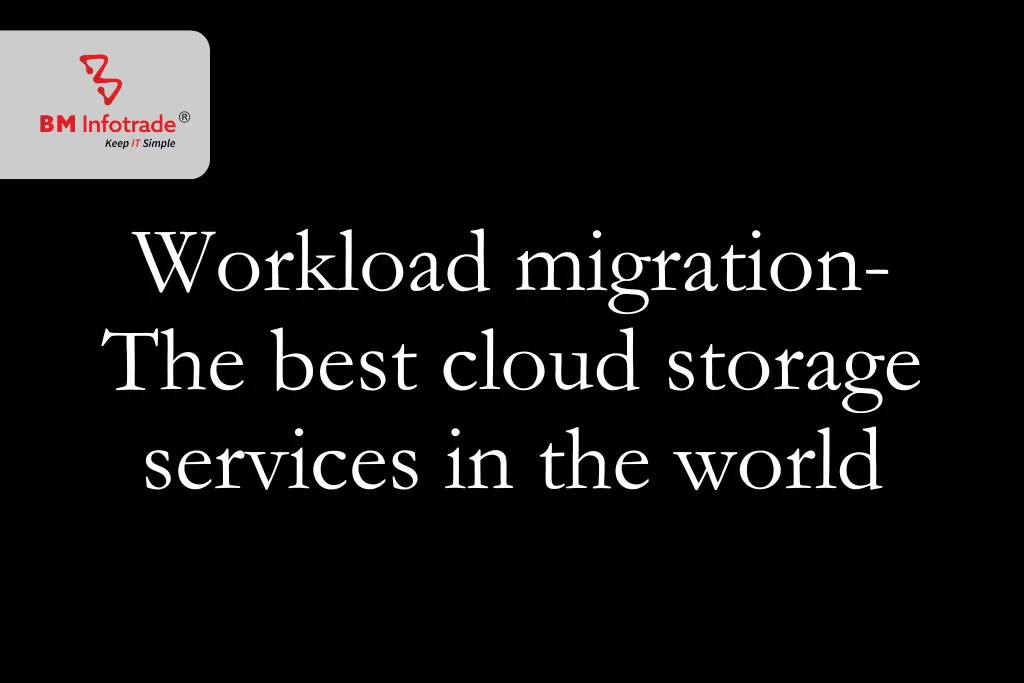Overcoming Obstacles-Real-world Challenges in Robotic Process Automation
Discover the common challenges faced in Robotic Process Automation (RPA) and effective strategies to overcome them for improved business performance.

Overcoming Obstacles-Real-world Challenges in Robotic Process Automation
Table of Contents
The optimum way to operate a business in the modern world is robotic process automation (RPA), which brings with it the best prospects for efficiency and productivity improvements. RPA at its core means using software robots to automate repetitive, rule-based tasks that were before performed by human beings. The importance of this technology in streamlining operations, cutting costs, and increasing accuracy cannot be overstated. However, getting there is not always easy; businesses must confront several significant obstacles as they adopt RPA. Real-world barriers often prevent organizations from fully exploiting the advantages of adopting
These complications embody technological, methodological, and structural aspects requiring creative resolutions together with strategic mindsets. This paper examines these hurdles and provides insights on how to overcome them to utilize the full potential of RPA in today’s fast-paced business environment. Organizations can achieve sustainable growth and competitive advantage by unlocking new levels of efficiency and agility if they understand and face these problems directly.
Understanding Common Challenges in RPA
Implementation of Robotic Process Automation (RPA) is usually faced with different challenges that touch on technology, organizational, and process areas.
Technical Challenges
-
Legacy systems have compatibility problems: During the implementation of RPA, they may lack the necessary APIs or integration capabilities for smooth automation, resulting in compatibility issues.
-
Security concerns and data protection: GDPR or HIPAA requires that RPA should handle sensitive data, raising concerns over data breaches and compliance as well.
-
Scalability and performance optimization: This is important when planning to scale up RPA initiatives across organizations, as this requires careful resource allocation and planning to ensure it happens optimally.
Process-related Challenges
-
Not all processes are candidates for automation: It is a big challenge to identify suitable processes with the highest ROI and automation potential; only among them can be automated.
-
Process variability and exception handling: They may involve variabilities as well as exceptions which cannot be automated easily, hence making it necessary for strong exception handling mechanisms to guarantee smooth running.
-
Managing stakeholder expectations: To avoid disillusionment and ensure that the project is successful, one needs to align the stakeholders’ expectations with RPA technology capabilities and limitations.
Organizational Challenges
-
Change management and employee resistance: Workers who are afraid of losing their jobs or having changes in their roles often resist introducing RPA since it usually brings about disruptions in the existing workflow.
-
Skill gap and talent acquisition: The required skill set for developing and maintaining RPA can be difficult to acquire, thus necessitating investments in training or hiring specialized staff.
-
Integration with existing IT infrastructure and workflows: Compatibility, data synchronization, and interoperability are among the issues connected to integrating RPA into present IT systems and workflows.
Read More:- Overcoming RPA Challenges for Business Efficiency
Strategies for Overcoming RPA Challenges
Implementing Robotic Process Automation (RPA) is a complex task that requires strategic approaches meant to meet its various challenges. Herein, we will propose some strategies on how we can effectively overcome these obstacles.

Technical Solutions
-
Implementing robust APIs for system integration:Therefore, developing well-defined APIs supports seamless integration between RPA platforms and existing systems by overcoming compatibility issues and enabling smoother data exchange.
- By using advanced security protocols as well as encryption techniques:In addition, implementing robust security measures like encryption and multi-factor authentication guarantees the protection of data while mitigating security concerns associated with RPA and ensuring regulatory compliance.
-
Continuous monitoring and performance tuning:Moreover, regularly monitoring the RPA processes, including performance metrics for timely identification of bottlenecks and inefficiencies, enables proactive optimization to scale up automation initiatives.
Process Improvement
-
Conducting thorough process analysis and documentation: The foremost priority is to do a thorough analysis of existing processes and document these accurately so that automation opportunities are identified correctly. This will ensure alignment with organizational goals and maximize return on investment from RPA implementation.
-
Intelligent automation for handling exceptions can also be implemented.
-
In addition, the incorporation of machine learning algorithms plus cognitive capabilities in RPA solutions allows for intelligent decision-making, thus adaptive responses to process variability plus exceptions, improving automation resilience and effectiveness.
-
Establishing clear communication channels with stakeholders:
-
Maintain open lines of communication with stakeholders, including business users, IT departments, and executives, to manage expectations effectively, solicit feedback, and ensure that there is alignment throughout the RPA journey.
Read More:- Digitization- The Digital Way of Life.
Overcoming RPA Challenges for Business Efficiency
Organizational Alignment
-
Developing comprehensive training programs for employees:
-
Invest in training programs that can improve employees’ skills in RPA technologies and methodologies so that they can actively participate in automation initiatives as well as adapt to changing roles and responsibilities
-
Creating a culture of innovation and adaptability:
-
Create an environment that supports innovative thinking, experimentation, and continuous improvement, thus promoting new areas of automation while following evolving business requirements and technological advancement.
-
Collaborating with IT departments for seamless integration:
-
Form strong partnerships between the different business units and IT departments towards aligning RPA initiatives with IT infrastructure and governance frameworks, which will facilitate easy merging and prevent any disruptions in current workflows.
Conclusion
To sum up, Robotic Process Automation (RPA) offers a chance to revolutionize the way organizations’ operations are run, leading to efficiency and higher productivity levels. When you combine this with strategic solutions and innovative ways of addressing challenges inherent in RPA implementation, an organization can overcome barriers and get maximum benefits from automation.
With technological developments and ethical concerns influencing how RPA has evolved, businesses need to be adaptable to follow trends while observing ethical practices as well as human-friendly principles. If they use RPA strategically as a vehicle for digital transformation, they will make themselves ready for continuing success amid intense competition and changing market forces.








Anshul Goyal
Group BDM at B M Infotrade | 11+ years Experience | Business Consultancy | Providing solutions in Cyber Security, Data Analytics, Cloud Computing, Digitization, Data and AI | IT Sales Leader